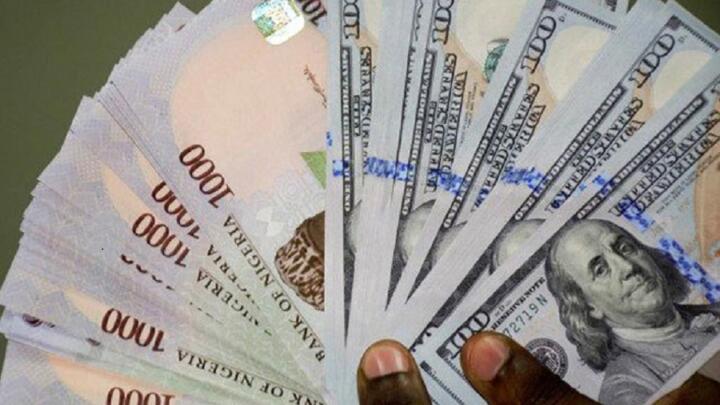The Nigerian Naira experienced mixed trading patterns in the foreign exchange market this week as strong demand for foreign currency continued to shape market sentiment. Traders and analysts observed fluctuations in the exchange rate across official and parallel market segments, reflecting persistent pressure from import demands, capital outflows, and speculative activities.
At the Nigerian Autonomous Foreign Exchange Market (NAFEM), the naira opened the week with a mild appreciation but soon retreated as demand for the United States dollar and other major currencies outpaced supply. Market data showed that the naira briefly strengthened against the greenback in early trading sessions, supported by improved inflows from remittances and export proceeds. However, these gains were eroded by mounting requests from importers, corporate entities, and investors seeking to hedge against possible further depreciation.

By midweek, the local currency recorded losses in both official and parallel markets, with the rate slipping in reaction to heightened liquidity pressures. Dealers attributed the volatility to seasonal demand patterns, noting that the summer holiday period often triggers an uptick in forex requests for overseas tuition fees, medical bills, and holiday expenses. Additionally, businesses ramped up their orders for raw materials and equipment imports, increasing pressure on available foreign exchange resources.
The Central Bank of Nigeria (CBN) has continued its interventions in the FX market, aiming to stabilise the naira and ensure sufficient liquidity. Sources within the market revealed that targeted sales to authorised dealers were made during the week to meet critical import needs, particularly in the manufacturing and energy sectors. While these interventions provided temporary relief, they were insufficient to fully contain the impact of sustained demand pressures.
In the parallel market, the naira’s performance mirrored that of the official window, showing alternating days of mild recovery and subsequent depreciation. Currency traders in Lagos and Abuja cited heightened speculative trading as a contributing factor to the swings, with some market participants buying and holding foreign currency in anticipation of further weakening of the naira. This behaviour, they argued, tends to amplify volatility by limiting the volume of forex available for immediate trade.
Financial analysts believe the naira’s mixed trajectory is tied to broader macroeconomic conditions, including Nigeria’s import-dependent economy, fluctuating oil revenues, and capital market sentiment. The global oil market’s price softness in recent weeks has also reduced foreign exchange inflows from crude oil sales, further constraining dollar availability. While non-oil exports have seen gradual growth, they remain insufficient to offset the country’s large import bill.
The CBN has consistently reiterated its commitment to exchange rate stability, stressing the importance of ongoing reforms in the FX market. Officials have pointed to measures such as encouraging diaspora remittances through formal channels, promoting non-oil export earnings, and reducing forex allocations for items that can be produced locally. The apex bank has also urged Nigerians to avoid speculative trading, noting that such practices undermine currency stability and economic growth.
Market participants said the coming weeks will be crucial for the naira’s short-term outlook. A sustained increase in foreign exchange inflows from crude oil sales, foreign investment, or external loans could ease some of the current pressures. However, if demand continues to outpace supply, the currency could face renewed depreciation despite the CBN’s intervention efforts.
Businesses that rely heavily on imported inputs have expressed concern over the naira’s instability, warning that it could translate into higher production costs and consumer prices. Manufacturers say unpredictable exchange rates make it difficult to plan ahead and maintain competitive pricing. Retail traders and service providers also fear that prolonged volatility will erode consumer purchasing power, especially in a period marked by inflationary pressures.
Some experts argue that the government’s broader economic reforms, if sustained, could help strengthen the naira in the medium term. These include ongoing efforts to boost oil production, diversify export revenues, attract foreign investment, and improve the ease of doing business. They also emphasise the need to enhance domestic production capacity to reduce the country’s dependence on imported goods.
While the naira’s mixed performance this week has sparked debate on its resilience, most observers agree that currency stability will remain a delicate balancing act for policymakers. With Nigeria’s foreign reserves under strain and external economic conditions uncertain, the path ahead for the naira will depend on how effectively the authorities can address structural weaknesses in the forex market while maintaining investor confidence.
For now, the local currency remains caught between intermittent gains from official interventions and persistent downward pressure from high forex demand. Whether the balance tips toward sustained stability or renewed weakness will be determined by developments in both the domestic economy and the global financial environment in the weeks ahead.
Support InfoStride News' Credible Journalism: Only credible journalism can guarantee a fair, accountable and transparent society, including democracy and government. It involves a lot of efforts and money. We need your support. Click here to Donate
